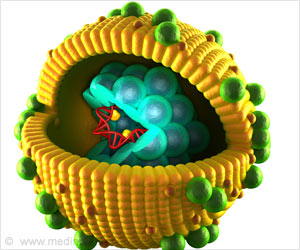Copper fights against infection, humans are aware of it, but so does the bacteria that cause grave urinary tract infections, which rob copper to avoid the metal from being used against them.

In the United States alone, annual treatment costs for urinary tract infections are estimated to run as high as $1.6 billion. Most urinary tract infections are caused by Escherichia coli (E. coli).
"While some patients are able to clear these infections without issue, in others the infection persists or recurs despite antibiotic therapy," says senior author Jeff Henderson, MD, PhD, assistant professor of medicine and of molecular microbiology. "In some cases, the infection spreads to the kidney or the blood and becomes life-threatening. We've been investigating what's different about the bacteria that cause these more troublesome infections."
Scientists have known for years that E. coli makes a molecule called yersiniabactin that takes iron from host cells. The bacteria need the iron to grow and reproduce.
In earlier research, Henderson found that the E. coli that cause serious infections are more likely to make yersiniabactin. This finding and the fact that E. coli already produce another molecule that steals iron led Henderson and Kaveri Chaturvedi, a student in his laboratory, to suspect that the bacterium might be using yersiniabactin for other purposes.
To test the theory, the researchers put yersiniabactin in urine samples from healthy patients. They found the molecule bound iron as expected but also picked up copper. Next, they conducted the same analysis in samples from patients with urinary tract infections who were treated at the University of Washington in Seattle.
Advertisement
When researchers put E. coli in the same test tube with copper, the bacteria that made yersiniabactin were more likely to survive.
Modern researchers have two explanations for copper's anti-microbial effects: the metal can stimulate production of other chemically reactive molecules that damage bacteria; and it is also directly toxic to the bacteria.
Henderson, who treats patients with urinary tract infections at Barnes-Jewish Hospital, is currently studying whether the presence or absence of yersiniabactin can help physicians assess an infection's chances of becoming more serious.
He and his colleagues are also looking at other disease-causing bacteria that make yersiniabactin to see if they use it in a fashion similar to the E. coli that cause urinary tract infections.
Source-Eurekalert















